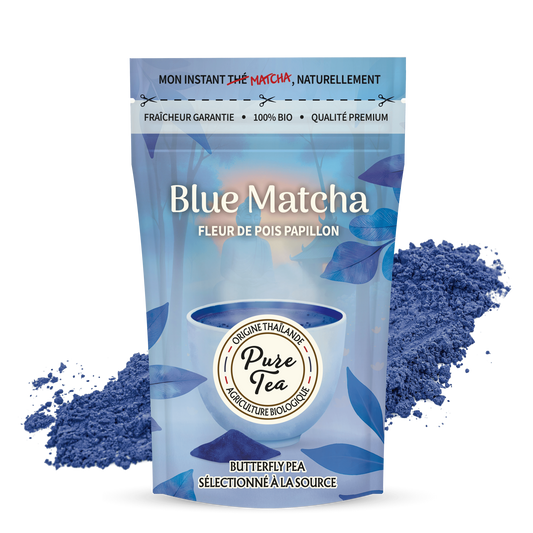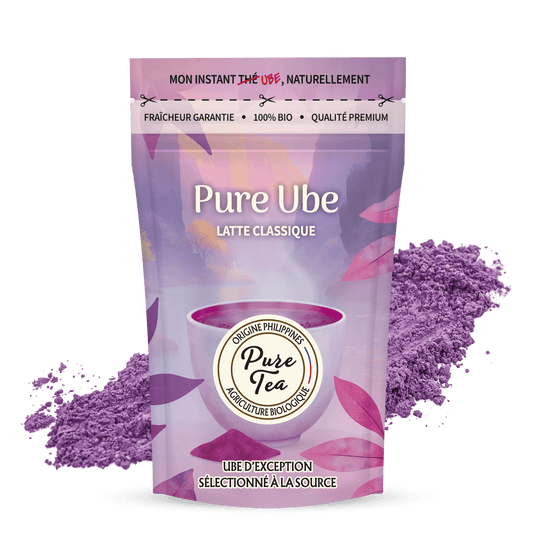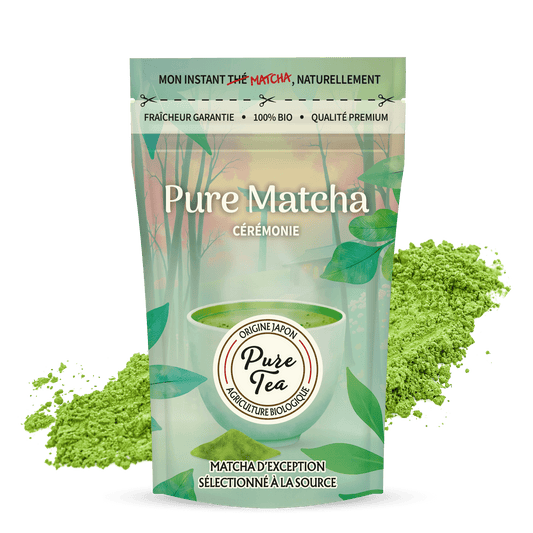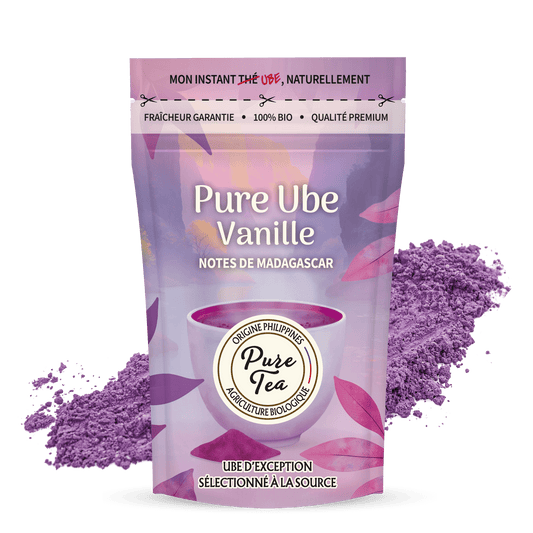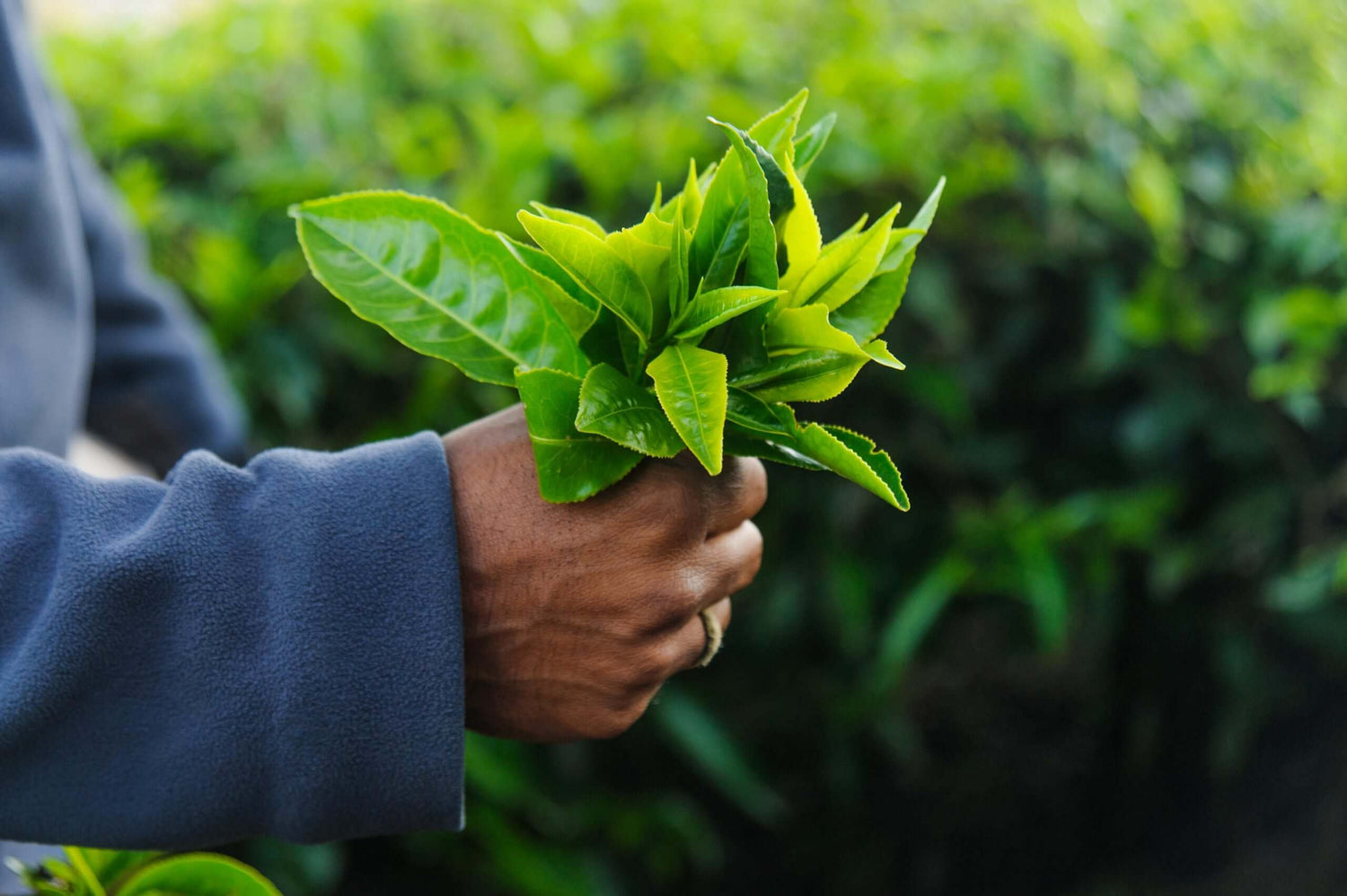Knowing how to brew my tea properly can turn a simple drink into an extraordinary sensory experience. Whether you love bold black tea, delicate green tea, soothing herbal infusions, or are enchanted by the smoothness of rooibos, this detailed guide reveals all the secrets to a perfect brew. Discover the precise techniques that will elevate every cup and unlock the full aromatic complexity of your favorite teas.
The Essentials of the Perfect Brew
The 4 Pillars of a Perfect Brew
Before exploring the specifics of each type of tea, let’s understand the key elements that influence the quality of your brew:
1. Water Quality
- Use filtered or spring water with low mineral content
- Avoid tap water that’s too hard, as it can alter the flavors
- The ideal pH is between 6 and 7
- Water that’s too hard will mask the tea’s subtle notes.
2. Precise Temperature
- Each type of tea requires a specific temperature
- Too hot: bitterness and destruction of delicate flavors
- Too cold: insufficient extraction of aromatic compounds
- Invest in a thermometer or a variable-temperature kettle
3. Steeping Time
- Strictly follow the recommended steeping times
- Over-steeping releases too many tannins (bitterness)
- Under-steeping doesn’t reveal all the flavors
- Use a timer for accuracy
4. Optimal Dosage
- The general rule: 2-3g of tea for 200ml of water
- Adjust to your personal taste
- Loose leaf teas need more space to expand
- Measure with a measuring spoon for consistency
Black Tea: The Art of Bold Brewing
Fully oxidized, black tea offers rich, malty flavors that truly shine with the right brewing technique.
Black Tea Brewing Parameters
Ideal temperature: 90-95°C Steep time: 3-5 minutes Dosage: 2.5g for 200ml of water
Detailed Guide to Brewing Black Tea
-
Preheating the teapot: Pour hot water into your teapot, let it sit for 30 seconds, then empty it. This step maintains the optimal temperature during steeping.
-
Precise measurement: Use a heaping teaspoon (about 2.5g) of loose black tea. A precision scale ensures perfect consistency.
-
Water temperature: Bring water to a boil (212°F/100°C), then let it cool for 1-2 minutes to reach 194-203°F (90-95°C). Boiling water burns delicate leaves.
-
Dynamic pouring: Pour the water in a circular motion to agitate the leaves and promote even extraction.
-
Timed infusion :
- 3 minutes: For a light, aromatic tea
- 4 minutes: The perfect balance between strength and smoothness
-
5 minutes: For strong tea lovers
-
Immediate straining: Remove the leaves as soon as the steeping time is up to avoid bitterness.
Varieties of Black Tea and Their Unique Qualities
- Assam: Robust and malty, can steep for 5 minutes
- Ceylon: Bright and lively, best steeped for 3-4 minutes.
- Darjeeling: Delicate and floral, do not steep for more than 3 minutes
- Earl Grey: Bergamot flavor comes through best with a 4-minute steep
Mistakes to Avoid with Black Tea
- Never reuse already boiled water (lacks oxygen)
- Avoid metal containers that can alter the taste
- Do not pack the leaves into the infuser (they need room to expand)
- Wait before adding the milk (let it steep first)
Green Tea: Pure Delicacy
Green tea, which is unoxidized, retains its fresh, vegetal notes and antioxidants. Its brewing requires more precision to avoid bitterness.
Green Tea Brewing Parameters
Ideal temperature: 70-80°C Steep time: 1-3 minutes Dosage: 2g per 200ml of water
Green Tea Brewing Technique
-
Cooling the water: After boiling, let the water cool for 5-7 minutes or pour it back and forth between two containers several times to speed up cooling.
-
Preparing the leaves: Quality green teas can be quickly rinsed (5 seconds) with warm water to “wake them up.”
-
First Steep :
- Pour water at 70-80°C over the leaves
- Japanese teas (Sencha, Gyokuro): 1-2 minutes max
-
Chinese teas (Longjing, Gunpowder): 2-3 minutes
-
Multiple infusions: High-quality green teas can be infused 2-3 times. Increase the temperature by 5°C and the steeping time by 30 seconds with each infusion.
-
Immediate serving: Green tea is best enjoyed within 30 minutes of brewing to experience its freshness.
Pro Tips for Green Tea
- Temperature Test: If you don’t have a thermometer, wait until you no longer see vigorous steam rising.
- Gong Fu Method: Use more tea (5g/100ml) with very short infusions (30 seconds)
- Storage: Brewed green tea doesn’t keep, so only make what you’ll drink
Types of Green Tea and Specific Temperatures
- Sencha: 70°C to preserve its umami sweetness
- Matcha: Maximum 80°C, whisked, not steeped
- Gunpowder: 176°F, can handle a longer steep
- Jasmine: 75°C to balance tea and flowers
Infusions: The Pure Expression of Plants
Herbal infusions (tisanes) offer an endless palette of flavors without caffeine. Each plant has its own specific requirements.
General Steeping Parameters
Ideal temperature: 95-100°C Steeping time: 5-10 minutes Dosage: 3-4g for 250ml water
Complete Herbal Tea Brewing Guide
-
Boiling water: Most plants need very hot water to release their active compounds and flavors.
-
Generous dosing: Dried herbs are bulky. Use 1-2 heaping tablespoons per cup.
-
Long steep :
- Tender leaves (mint, lemon balm): 5-7 minutes
- Flowers (chamomile, linden): 7-8 minutes
- Roots and barks (ginger, cinnamon): 10-15 minutes
- Dried fruit: 8-10 minutes
-
Essential cover: Cover your cup or teapot while steeping to preserve the volatile essential oils.
-
Careful filtration: Use a fine strainer to remove all plant residues.
Popular Infusions and Their Secrets
Chamomile
- Temperature: 212°F
- Time: 7 minutes
- Tip: Do not exceed 10 minutes to avoid bitterness
Peppermint
- Temperature: 203°F
- Time: 5–6 minutes
- Tip: Gently crush the leaves before steeping
Verbena
- Temperature: 212°F
- Time: 8 minutes
- Tip: Excellent as an iced infusion
Fresh Ginger
- Temperature: 212°F
- Time: 10-15 minutes
- Tip: Lightly crush for more intensity
Advanced Steeping Techniques
- Decoction: For tough roots, boil for 10 minutes
- Cold brew: Some plants (hibiscus) are steeped cold for 4-8 hours
- Synergy: Blend plants with similar steeping times
Rooibos: The Red Treasure of South Africa
Rooibos, naturally caffeine-free and rich in antioxidants, offers a unique vanilla-like sweetness that lends itself to various brewing methods.
Rooibos Brewing Parameters
Ideal temperature: 203-212°F (95-100°C) Steep time: 5-7 minutes (can go up to 10) Amount: 2.5g per 200ml of water
Perfect Rooibos Brewing Method
-
Very hot water: Rooibos can withstand and requires boiling water to reveal its complexity.
-
Flexible dosing: Unlike teas, rooibos doesn’t become bitter. Adjust to your desired strength.
-
Extended steeping :
- 5 minutes: Light, sweet flavor
- 7 minutes: Full and balanced profile
- 10 minutes: Rich and concentrated, perfect with milk
-
Versatility: Rooibos tastes great even if forgotten in the teapot!
-
Varied service :
- Plain: To enjoy its honey and vanilla notes
- With milk: Plant-based or dairy, for a latte effect
- Iced: Brew double strength and pour over ice.
Rooibos Varieties and Preparations
Red Rooibos (Fermented)
- Profile: Smooth, honeyed, vanilla
- Steep: 7 minutes at 100°C
- Perfect with: Honey, lemon, milk
Green Rooibos (Unfermented)
- Profile: More herbal and fresh
- Steep: 5–6 minutes at 203°F
- Pairs well with: Mint, citrus fruits
Flavored Rooibos
- Vanilla, caramel, red berries
- Follow the steeping times for plain rooibos
- Flavors develop best with a 7-minute steep
Benefits and Tasting Moments
- Caffeine-free: Perfect for evenings
- Rich in antioxidants: Best after 7 minutes of steeping
- Easy to digest: Ideal after meals
- Hydrating: Excellent cold for sports
Summary Table: Your Infusions at a Glance
| Type | Temperature | Time | Dosage/200ml | Re-steeping |
|---|---|---|---|---|
| Black Tea | 90-95°C | 3-5 min | 2.5g | 1-2 times |
| Green Tea | 70-80°C | 1-3 min | 2g | 2-3 times |
| Infusions | 95-100°C | 5-10 min | 3–4g | 1 time |
| Rooibos | 95-100°C | 5-10 min | 2.5g | 2-3 times |
Essential Accessories for the Perfect Brew
A Must-Have for Tea Lovers
-
Thermometer or Programmable Kettle
- Crucial temperature accuracy
- Time-saving and consistency
-
Dedicated Timer
- Mobile app or kitchen timer
- Alerts so you never over-steep
-
Filters and Infusers
- Wide basket for leaf expansion
- Avoid tea balls that are too small
- Paper filters for fine teas
- Travel infusers to take your loose tea anywhere
-
Suitable Teapot
- Porcelain or glass for delicate teas
- Terracotta for robust teas
- Capacity to suit your habits
Caring for Your Accessories
- Rinse with hot water after each use
- Avoid scented detergents
- Descale regularly with white vinegar
- Dry completely to prevent mold
Frequently Asked Questions About Tea Brewing
Can I Reuse My Tea Leaves?
Yes, for certain teas:
- Green and white teas: 2-3 infusions possible
- Oolongs: Up to 5-7 infusions
- Black teas: Usually 1-2 infusions
- Infusions: Only one use recommended
How to Fix Overly Bitter Tea?
- Lower the water temperature
- Reduce steeping time
- Use less tea
- Add a pinch of salt (to neutralize bitterness)
Which Water Should I Choose for My Tea?
Water makes up 99% of your cup:
- Ideal: Low-mineral spring water (< 100mg/L residue)
- Acceptable: Filtered tap water
- To avoid: Distilled water (too flat) or highly mineralized water
Why Choose Loose Leaf Tea?
At Pure Tea, we offer only loose leaf tea for several excellent reasons:
Premium Quality:
- Whole leaves preserved in their integrity
- Aromas and essential oils better preserved
- Ability to see and smell the product’s quality
Optimal Infusion:
- The leaves have enough space to fully unfold
- Full release of flavors and benefits
- Better control over the amount to suit your taste
Cost-effective and Eco-friendly:
- More cost-effective by weight
- Zero individual packaging waste
- Ability to buy the exact quantity you want
- Multiple reinfusions possible with quality teas
Brewing Rituals Around the World
Gong Fu Cha (China)
- Multiple short infusions
- Small teapots (3.4–5 oz)
- Focus on flavor development
Tea Ceremony (Japan)
- Millimeter precision
- Water at the exact temperature
- Codified gestures
Afternoon Tea (England)
- Strong black tea
- Served in fine porcelain
- Sweet and savory pairings
Moroccan Mint Tea
- Gunpowder Green Tea
- Plenty of fresh mint
- High pour for aeration
Conclusion: Your Journey to the Perfect Cup
Mastering how to properly steep my tea turns every break into a moment of fulfillment. Whether you prefer the boldness of black tea, the freshness of green tea, the benefits of herbal infusions, or the smoothness of rooibos, these techniques guarantee you the best experience with every cup.
Remember, these recommendations are just guidelines: your personal preferences are your best compass. Experiment with temperatures and steeping times to find your perfect balance. The important thing is to take the time to savor this ancient ritual that unites cultures around the world.
At Pure Tea, we exclusively select premium loose leaf teas, herbal infusions, and rooibos that deserve to be brewed with care. Our preserved whole leaves guarantee you an authentic and full-flavored tasting experience. Each cup is an invitation to travel and discovery. Enjoy your tasting!




